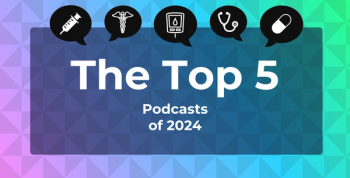
Policy
Latest News

Latest Videos

CME Content
More News

The increased urgency for vasectomy follow-through among men post-Dobbs aligns with previous administrative data indicating a rise in vasectomy procedure volumes after the decision.

The authors used medical loss ratio forms to assess trends in premiums, medical claims, administrative costs, quality improvement, and margins in the large group insurer market.

Cochair of our recent Institute for Value-Based Medicine® event hosted with NYU Langone Health, Oscar B. Lahoud, MD, speaks on his hoped-for top health care priorities under the incoming administration.

Check out this year's top coverage from The Academy of Managed Care Pharmacy (AMCP) Nexus 2024 meeting, which included relevant topics in health care policy, novel pharmaceutical developments, financial considerations across multiple conditions, and more.

The top 5 podcasts for 2024 cover Medicare Advantage prior authorization, health equity, global immunization challenges, trauma-informed care, and health literacy.

The health care provisions include key reforms targeting pharmacy benefit managers, extensions of Medicare telehealth flexibilities, and measures aimed at combating the opioid crisis and preparing for future pandemics.

A recent Federal Order from the US Department of Agriculture aims to track, prevent, and address contaminated dairy products while public health risk remains low.

Since its founding in 2012, the National Association of ACOs has evolved from a group of 30 to 477 accountable care organization members covering 9.2 million beneficiary lives.

Medicaid and other managed care organizations could take several key steps to respond to the sexually transmitted infection (STI) epidemic in the US, including congenital syphilis.

This survey study finds that most Missouri Medicaid providers had capacity for new patients, even during a period of unprecedented Medicaid enrollment growth.

A new report from The Commonwealth Fund compares trends in health plan spending and employee costs for 2014 through 2023 between small and large businesses, taking into account plan premiums, employee contributions, and deductibles. It also highlights that although small firms do not even have to offer health benefits, large firms are required to do so by the Affordable Care Act.

Big Hairy Audacious Goals (BHAGs) can focus our attention and propel needed action to improve total population health, the authors argue.

The authors evaluate features of the Transforming Episode Accountability Model and discuss its benefits and limitations.


The authors discuss multiple challenges to the production of policy-relevant results from evaluation of Medicare accountable care organizations (ACOs).

The editor in chief introduces and summarizes commentaries from our editorial board containing practical solutions that could be feasibly implemented to improve American health care.

This commentary, part of the Price Crisis campaign, calls for state and federal policy interventions that are needed to rebalance the market to enhance competition and provide value in health care.

Panelists proposed policy solutions to ensure long-term sustainability of infused biosimilars amid current challenges, including average sales price erosion and reimbursement issues.

The 6-year mandatory Increasing Organ Transplant Access Model aims to boost kidney transplants and address disparities by incentivizing hospitals, enhancing care coordination, and measuring transplant outcome performance.

While the Medicare Competitive Bidding Program reduced spending, it did not significantly impact supplemental oxygen use or clinical outcomes among patients with chronic obstructive pulmonary disease (COPD).

If made official, the proposed rule would give Part D and Medicaid beneficiaries expanded coverage to antiobesity drugs starting in 2026.

On Friday, President-elect Donald Trump announced his nominations to lead the CDC, for FDA Commissioner, and for Surgeon General.

Lindsay Bealor Greenleaf, JD, MBA, discusses how the appointment of Robert F. Kennedy Jr as HHS secretary could affect health care services in the future.

To achieve longer accountable relationships, a bridge from one insurer to another could be built through continuity of accountability amid insurance transitions, improved risk prediction, and cooperation in the design of accountable care models.

Despite significant progress in expanding health insurance coverage since the Affordable Care Act (ACA) was enacted, millions of Americans still face critical gaps in access to and affordability of health care.
















































